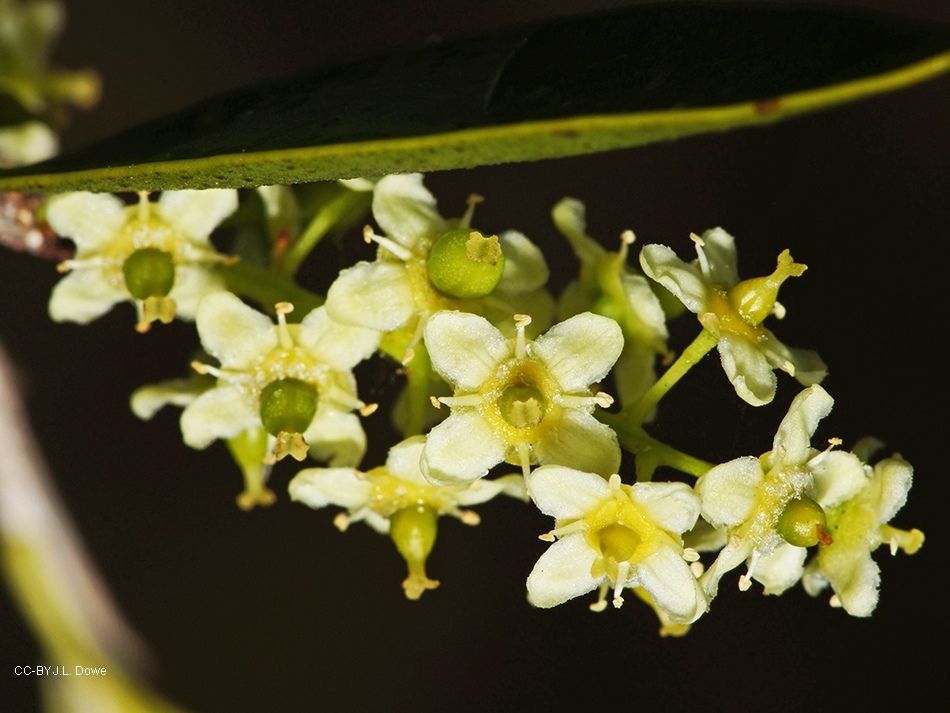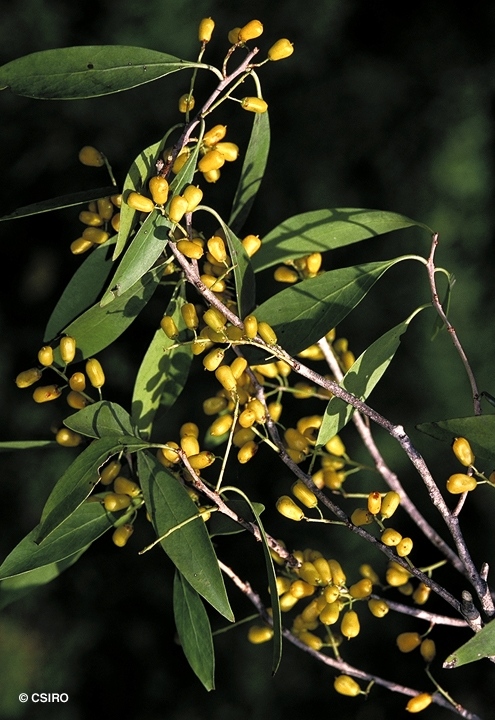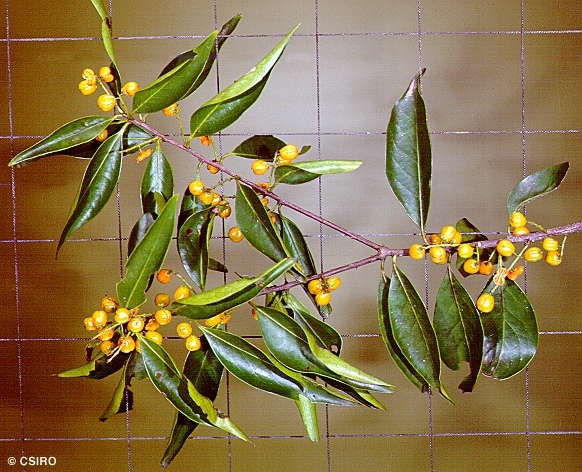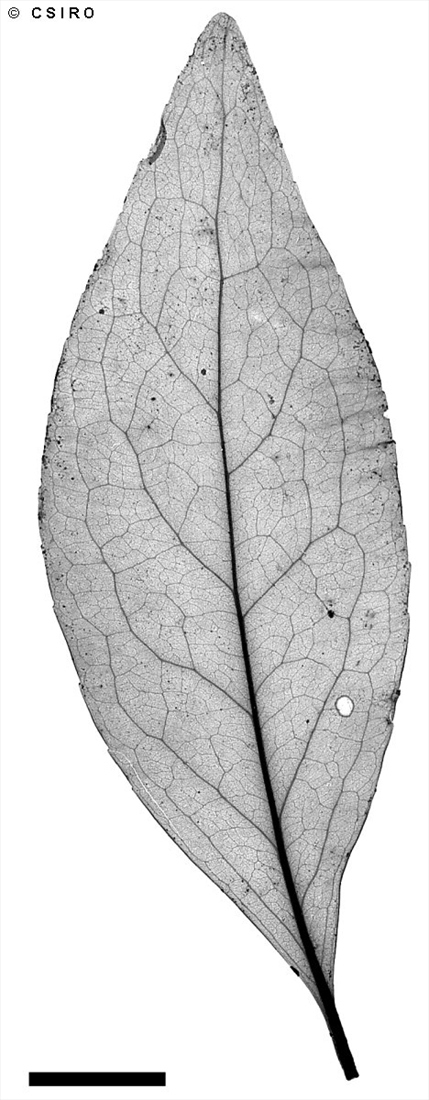Australian Tropical Rainforest Plants - Online edition
Denhamia disperma (F.Muell.) M.P.Simmons









McKenna, M.J. et al (2011) Systematic Botany 36(4): 929.
Orange Boxwood; Boxwood, Orange; Orange Tree; Taper Leaf Orange Bark; Orange Bush; Orange Bark
A thin orange layer often present just inside the dead bark. Cream and pink layers in the blaze.
A thin orange layer usually visible when the twig bark is scraped with a knife. Numerous white or pale lenticels normally visible on the older twigs. Leaf blades about 30-80 x 10-40 mm. Midrib raised on the upper surface and leaf stalk channelled on the upper surface, but usually with a ridge down the middle.
First pair of leaves with inconspicuous crenate teeth, 1-2 on each side of the leaf blade. At the tenth leaf stage: leaves elliptic, apex acute or obtuse, base cuneate, glabrous on the upper surface, midrib raised on the upper surface, teeth small and inconspicuous 1-3 on each side of the leaf blade; stipules small, triangular, about 0.5 mm long. Seed germination time 53 to 345 days.
Endemic to Australia, occurs in NEQ, CEQ and southwards to north-eastern New South Wales. Altitudinal range in NEQ from 300-1100 m. Grows in drier rain forest and monsoon forest.
Celastrus dispermus F.Muell., Transactions of the Philosophical Institute of Victoria 3: 31(1859), Type: In the Araucaria Forests, near Moreton Bay. Maytenus disperma (F.Muell.) Loes., Die Naturlichen Pflanzenfamilien ed. 2 20b: 135 (1942).





